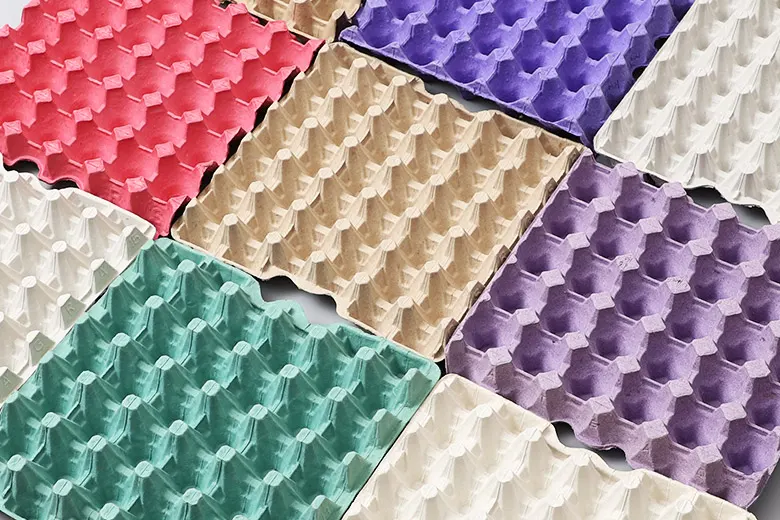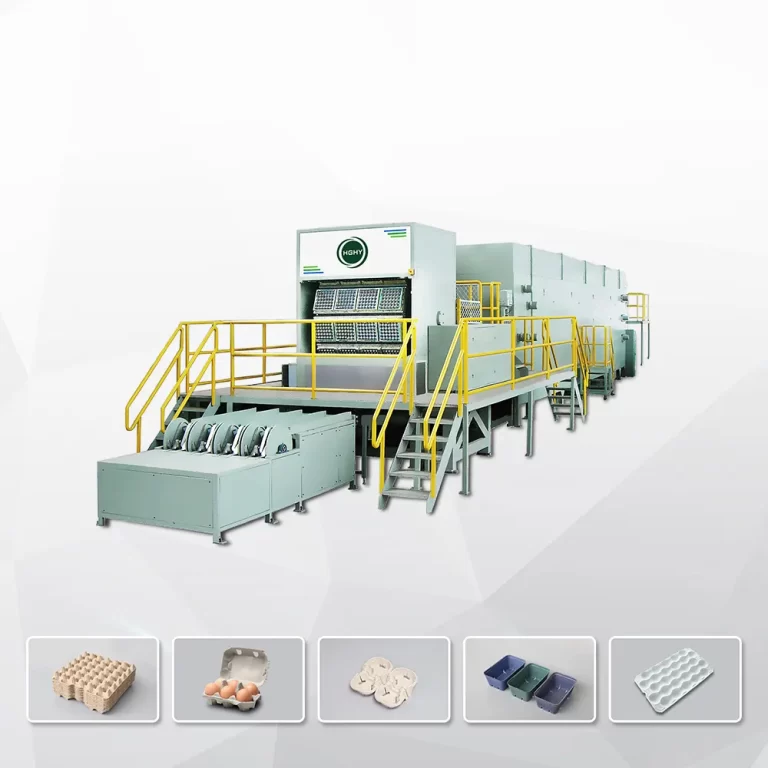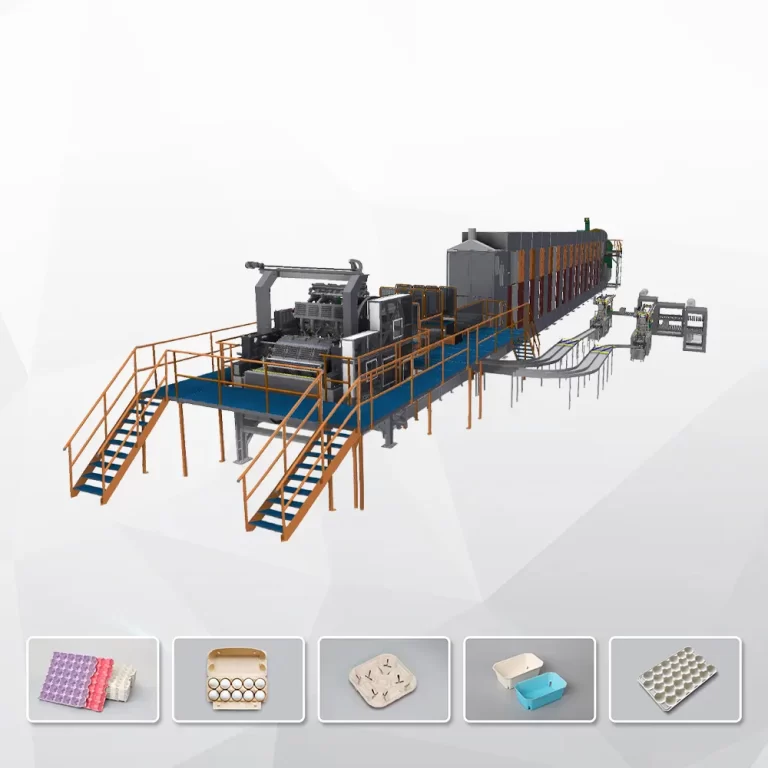The process involves pulp production, molding, drying, and packaging systems. The pivotal piece of equipment you’ll use is the HGHY pulp molding machine. Below, we’ll outline the step-by-step process of making egg trays.

Step 1. Generating Pulp from Recycled Pape
The initial step is breaking down waste paper into paper pulp. This can include old newspapers, used cardboard, outdated books, and similar materials. The primary equipment comprises a hydraulic pulper, a pulp refiner, pulp pumps, and water pumps. Operation is straightforward: workers place the waste paper and water into the hydraulic pulper, where it is transformed into pulp and stored in a pulp pool. Subsequently, a pulp refiner is employed to refine the pulp for use. The prepared pulp is then pumped into the molding system.
Step 2. Molding Pulp into Trays
This constitutes the pivotal segment of an egg tray production line. The prepared pulp is conveyed via pumps to the pulp molding equipment. Through the utilization of a vacuum pump and an air compressor, the paper pulp is molded in forming molds. Different pulp products can be produced using diverse molding dies. The transfer molds then demold the damp trays. HGHY’s pulp molding system is automated, ensuring that the egg tray production line is easy and safe to operate. Furthermore, with various molding die designs, you can create different trays, such as egg trays, egg cartons, cup holders, etc.
Step 3. Drying Trays
Despite the assistance of a vacuum pump in removing most of the water from the pulp trays, the egg trays are still damp after demolding. Consequently, they require drying. There are three distinct drying methods to select from, which dictate the level of automation in an egg tray production line. These methods include natural drying (manual), brick drying line, and metal drying line. The best choice depends on several factors, such as investment cost and the scale of your egg tray plant.
Step 4. Packaging Trays for Sale
Following the drying process, you’ll need to stack the trays for sale. HGHY provides various equipment based on your specific requirements, including a hot press machine, packer, counter, etc. The hot press can enhance the appearance of the trays, making them neat and attractive. The packer ensures the trays are stacked compactly for easy transportation and storage. Additionally, a counter is utilized to efficiently count the trays. In summary, we can provide everything you need, and the entire process is free from contamination.
HGHY EGG TRAY MACHINES

Automatic Rotary Egg Tray Machine
Fast return on investment, higher cost performance. Automatic Egg Tray Machine (egg tray machine price, egg tray manufacturing machine) Mainly applied for producing egg trays, drinking cup carrier trays, fruit trays, bottle trays and other regular shape standard products and so on.

High Speed Double Rotary Egg Tray Machine
High speed beyond ordinary, world-class performance. Suitable for the production of egg trays, fruit trays, drinking cup carrier trays, bottle trays and other regular shape standard products.
Raw Material
The production process of paper egg trays necessitates the utilization of several key raw materials, which encompass waste paper, water, chemicals, and dyes. Each of these elements plays a vital role in crafting durable and high-quality egg trays. Here’s a breakdown of these raw materials and their significance:
Waste Paper: Waste paper stands as the primary and fundamental raw material employed in the manufacture of egg trays. It undergoes a series of processes, including shredding, soaking, and beating, to transform it into a pulp that serves as the building block for creating the egg trays. Waste paper can be sourced from various outlets, including offices, schools, and households.
Water: Water is an essential ingredient in the egg tray production process. It is introduced into the waste paper to form a pulp mixture that is instrumental in shaping the egg trays. The water acts as a binding agent, facilitating the molding and formation of the trays.
Chemicals: Certain chemicals, such as sodium hydroxide and sodium silicate, are integrated into the pulp mixture. These chemicals serve the purpose of enhancing the strength and durability of the egg trays. They contribute to the overall structural integrity of the final product, ensuring that the trays can withstand handling and usage.
Dyes: Dyes are used to introduce color variations to the egg trays. They are mixed into the pulp mixture to produce trays in different colors, enhancing their visual appeal and customization options. This can be particularly important for branding and marketing purposes.



